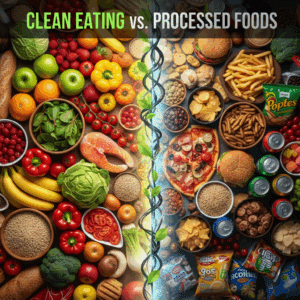Environmental and Social Impact of Fashion
The fashion industry significantly affects the environment and society, contributing about 10% of global carbon emissions. Its water pollution impact is also alarming, with 20% coming from industrial wastewater.
These figures highlight the urgent need for sustainable practices that minimize environmental harm and promote social responsibility throughout the entire supply chain. Responsible choices are essential to reduce these detrimental effects.
Carbon Emissions and Water Pollution
Fashion’s carbon footprint stems from production, transportation, and disposal stages, collectively releasing vast amounts of greenhouse gases. This contributes heavily to climate change and global warming.
Water pollution from dyeing and treating fabrics contaminates rivers and ecosystems, impacting human health and biodiversity. Reducing water use and waste is key to tackling these issues.
Importance of Sustainable Practices
Sustainable fashion embraces transparency, ethical labor, and eco-friendly materials like organic cotton and recycled fibers. These practices reduce energy, water use, and pollution effectively.
Adopting sustainable methods promotes fair working conditions and environmental preservation, encouraging the entire industry to respect human rights and planetary boundaries.
Principles and Materials of Sustainable Fashion
Sustainable fashion is based on key principles like supply chain transparency and ethical production, ensuring fairness in labor and environmental stewardship. These guide the transition towards a more responsible industry.
Using eco-friendly materials such as organic cotton, recycled polyester, and hemp reduces resource consumption and pollution. Innovative techniques complement these choices to further lessen environmental impact.
Efficient manufacturing processes that conserve energy and water are vital. They help curb waste and emissions, making production more sustainable and preserving natural resources for future generations.
Supply Chain Transparency and Ethical Production
Transparency in the supply chain allows consumers and brands to trace materials back to their origins, ensuring ethical labor standards and environmentally sound practices. It fosters accountability at every stage.
Ethical production respects workers’ rights, providing fair wages and safe conditions. This commitment counters exploitation often seen in fast fashion industries and promotes long-term social sustainability.
Brands adopting transparency report their sourcing policies openly, reinforcing consumer trust and encouraging the entire market to elevate standards. This shift supports a more just and conscious fashion cycle.
Eco-friendly Materials and Techniques
Eco-friendly fibers like organic cotton and hemp require less water and pesticides compared to conventional crops. Recycled fabrics reduce waste and demand for virgin resources, aligning with circular economy goals.
Innovative production methods, such as zero-waste pattern making and biodegradable dyes, minimize environmental harm. These techniques reduce landfill contributions and chemical pollution, enhancing garment sustainability.
Choosing materials and techniques thoughtfully helps decrease the fashion industry’s carbon footprint and conserves essential ecosystems while maintaining product quality and durability.
Energy and Water Efficient Manufacturing
Manufacturing garments with energy-efficient technologies lowers greenhouse gas emissions. Processes powered by renewable energy contribute directly to climate change mitigation in the fashion sector.
Water-efficient manufacturing reduces enormous water consumption typical in textile dyeing and finishing. Employing water recycling and less intensive methods helps preserve freshwater resources.
Implementing these efficiencies benefits both the environment and the industry financially by cutting costs and promoting innovation towards sustainability leadership.
Benefits of Sustainable Fashion for Consumers
Consumers gain numerous advantages from sustainable fashion, including enhanced durability and greater cost-effectiveness. These qualities promote smarter, long-term wardrobe investments.
Choosing sustainable fashion also helps reduce the environmental footprint. This supports the planet while encouraging ethical production and conscious consumption habits.
Durability and Cost-effectiveness
Sustainable clothing is often made with higher-quality materials and better craftsmanship, increasing its longevity. This means garments last longer, reducing the need for frequent replacements.
Although sustainable items can have a higher upfront cost, they save money over time by avoiding constant repurchasing. Durable products contribute to a more economical and mindful wardrobe.
Consumers benefit from fewer discarded clothes, which also lessens waste and environmental impact. Investing in quality aligns with both financial prudence and ecological responsibility.
Reduction of Environmental Footprint
Sustainable fashion lowers water consumption and carbon emissions by using eco-friendly materials and local production. This results in a less damaging impact on natural resources.
By supporting brands committed to responsible practices, consumers help shift industry standards toward transparency and ethical sourcing. This collective demand drives positive environmental change.
Adopting sustainable clothing choices reduces pollution and resource depletion, supporting a healthier planet while fulfilling personal style needs.
Consumer Actions for Eco-friendly Choices
Consumers play a crucial role in supporting sustainable fashion by making informed and responsible choices. Their demand can encourage brands to adopt greener and fairer practices in production.
By prioritizing eco-friendly options, shoppers help reduce waste, lower environmental impact, and promote social responsibility within the fashion industry, fostering a positive change on a global scale.
Choosing Ethical and Sustainable Brands
Selecting brands that commit to ethical labor and environmentally friendly materials ensures that garments are made with respect for people and the planet. This choice supports fair wages and safe working conditions.
Sustainable brands often use organic, recycled, or biodegradable fabrics, reducing resource consumption and pollution. Choosing these brands helps consumers align their purchases with their environmental values.
Researching brand practices, certifications, and supply chain transparency can empower consumers to identify companies that prioritize sustainability, increasing accountability across the fashion market.
Adopting Circular Fashion Practices
Circular fashion encourages extending the life cycle of clothing through buying secondhand, swapping, renting, and recycling garments. These actions reduce landfill waste and the demand for new resources.
Consumers can embrace repairing and upcycling clothes to avoid premature disposal. This approach saves money and lessens environmental impact while promoting creativity and personalization.
By closing the loop on fashion products, circular practices foster a sustainable consumption model that diminishes pollution and conserves natural resources, supporting a healthier planet.






